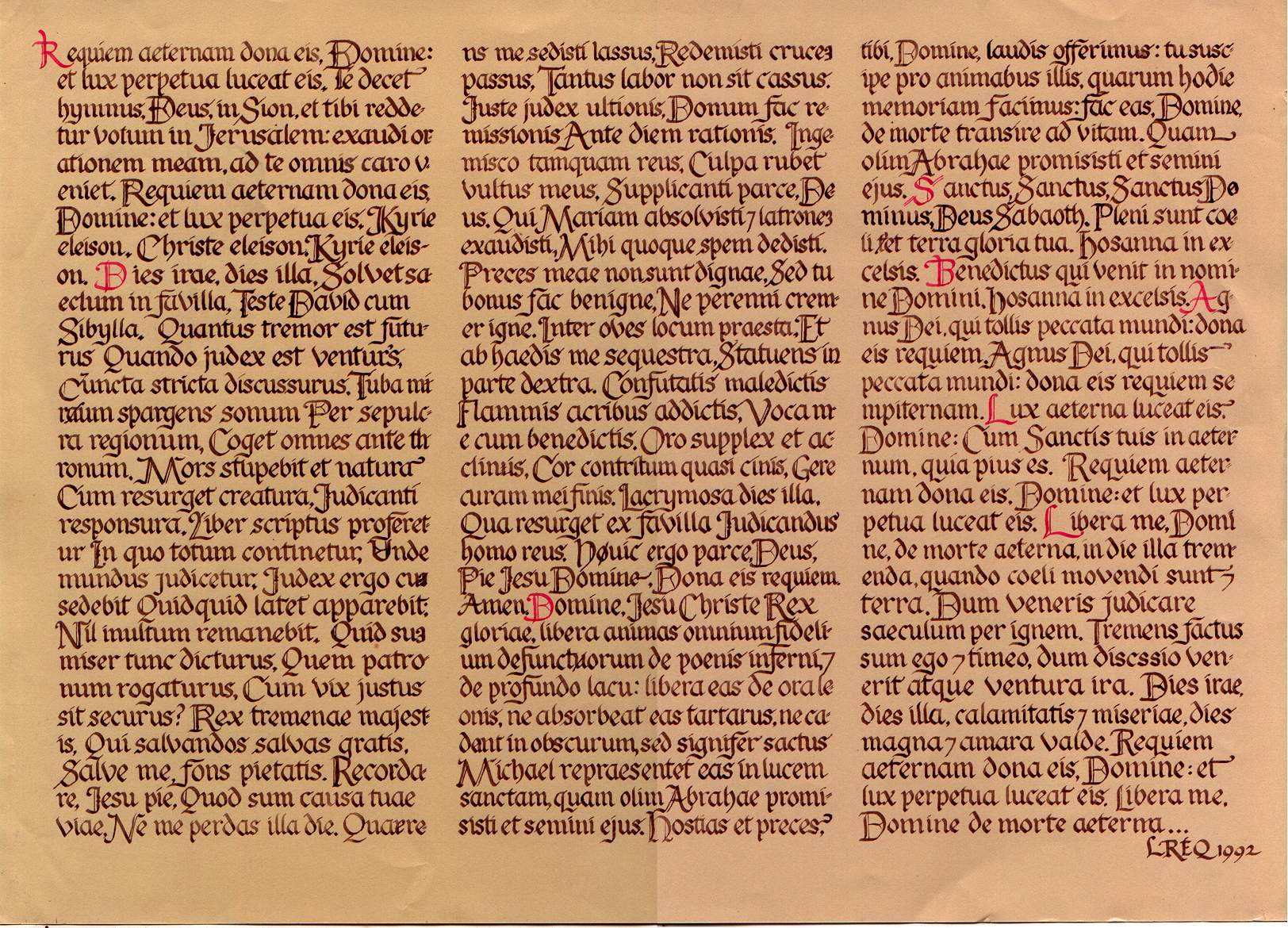Wednesday, August 20

The Muscular Sadness of Tomas Luis de Victoria
CD Review: Tomas Luis de Victoria. Requiem: Officium Defunctorum, 1605. Gabrieli Consort and Players. Deutsche Grammophon GmbH.
By far, the Requiem of Tomas Luis de Victoria, is the best of the Gabrieli Consort's musical offerings. Which is why, with all that marvelous intensity, it is almost unbearable to listen to. It is perfect recording of a perfect work, capturing a deep, powerful and beautiful sadness. The Requiem is a pure work of Renaissance genius embued ever-so-subtly with the first emotional stirrings of the dawn of the Baroque age. In particular, two pieces stand out, a splendid Taedet animam meam that introduces the Requiem mass proper, an extract from the Matins that would have preceded the burial of the Empress Maria of Austria, and the remarkable quadripartite Absolutio that would have been performed immediately after the liturgy to the accompanying polyphonic singing of the Libera me domine. In between are plenty of marvels as well, combining the openness of Spanish polyphony with the luxuriousness of the Italian school, as well as a majestic chanted Dies Irae.
These two motets, at beginning and end, in particular are expressed with remarkable vigor and power, a muscular, palpable sadness. Once again, the Gabrieli Consort excells at setting the scene for these pieces, providing the physical feel of the Requiem service by accompanying the singing with continuo provided by a dulzian (an archaic form of bassoon), sometimes called a bajon. This was a custom at Spanish Imperial funerals, as records of the time testify, and gives the work a degree of color and realism lacking in other more monochromatic recordings. Such attention to detail is genius, and the genius of Victoria is worthy of such care.
These realistic liturgical touches bring us back to the first time the Requiem was sung. The origins of the Requiem, published in 1605,lie in the remarkable funeral of Empress Maria of Austria, the daughter of Charles V and wife of Maximilian II. She had retired to Spain in 1581, spending the end of her days at the Convent of the Descalzas Reales, where she died in 1603. Victoria, the Empress's choirmaster at the convent, wrote the music for her obsequies. It was a splendid scene, as a manuscript preserved in the Biblioteca Nacional at Madrid tells us.
At the Vigil, according to this account, "...all the servants of Her Majesty [were] dressed in mourning capes, their heads covered with hoods... The royal chapel was hung with black velvet and damasks, as also were the pillars of the church crested with escucheons of the Imperial arms. In the centre, the sumptuous catafalque was supported on a frame 18 feet wide and 54 feet high without counting the Imperial crown at its pinnacle... [F]rom the corners of the catafalque sprung four spires with four candlesticks, each made of gratings of square wood filled with lights, being two thousand surrounding it; at the corners...stood mace-bearers with cowls, black cloaks, and maces of gilded silver..." The Vigil lasted from two to five in the afternoon, being followed the next day by three solemn Pontifical Masses, the final one being the Requiem, celebrated by the Bishop of Zaragoza, concluded by a pangyric in her honor and the incensation and absolution of her remains. "[W]ith this were concluded the royal obsequies of Her Majesty, which were the most solemn and sumptuous there have ever been in Spain." It is a testament to Victoria that you can see the Imperial obsequies in your mind's eye, for the music is truly worthy of such magnificent funereal pomp.
This recording would make a splendid addition to any CD library. Listen to it, meditate on it: this isn't just Gregorian for the bubble bath. This is a window on earthly grief transfigured by heavenly glory.












